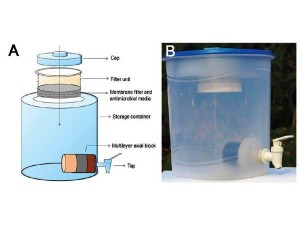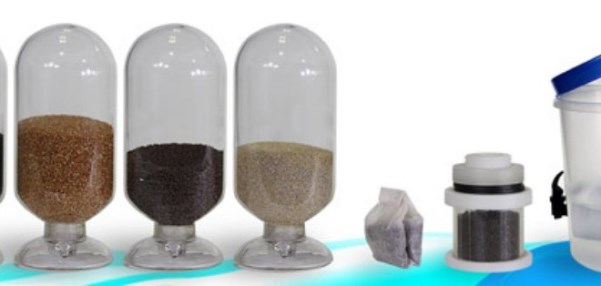The development of a simple point-of-use water filtration technology by researchers at the Indian Institute of Technology Madras (IITM) is said to be effective for producing drinking water at a low-cost, using nanomaterials to filter and clean the water.
 The new device, which is not yet under production, uses a two stage process to purify the water, first removing biological contaminants such as bacteria and viruses, and then using silver nanoparticles to remove chemical and heavy metal pollutants.
The new device, which is not yet under production, uses a two stage process to purify the water, first removing biological contaminants such as bacteria and viruses, and then using silver nanoparticles to remove chemical and heavy metal pollutants.
The filtration system is claimed to be able to remove lead, arsenic, and other hazards from water, at a cost of just $2.50 (USD) per year per family.
The critical problem in achieving this is the synthesis of stable materials that can release silver ions continuously in the presence of complex species usually present in drinking water that deposit and cause scaling on nanomaterial surfaces.Here we show that such constant release materials can be synthesized in a simple and effective fashion in water itself without the use of electrical power.
The nanocomposite exhibits river sand-like properties, such as higher shear strength in loose and wet forms. These materials have been used to develop an affordable water purifier to deliver clean drinking water at US $2.5/y per family.
The ability to prepare nanostructured compositions at near ambient temperature has wide relevance for adsorption-based water purification.
According to PhysOrg, the biggest challenge for the team was in developing a system that could release silver ions continuously as part of the purification process, without using any electricity.
They ended up creating a composite structure that traps the nanoparticles in “composite cages” made from a clay-like material, which allows for the device to produce potable water that measures up to drinking water standards, at a rate of up to 10 liters per hour.
Source: http://www.bluechannel24.com/ | Derek Markham | Tree Hugger
Dear User/Visitor! Please, answer on our questions: tick off one of the positions – your answer will make us able to improve our site and make it more interesting and useful!


